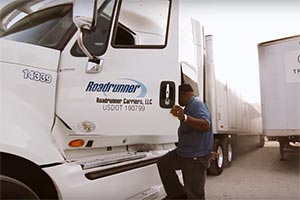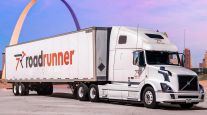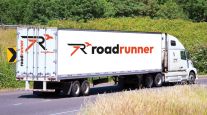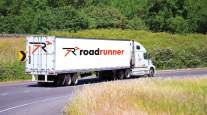Aggressive Acquisitions Fed Roadrunner Woes

Not long ago, Roadrunner Transportation Systems was speeding down the growth highway.
Now, the Cudahy-based trucking and logistics firm seems to be hitting pothole after pothole.
After falling far short of its own earnings projections in one quarter and seeing profits plunge sharply in another, Roadrunner now must restate nearly two years’ worth of financial results, lowering previously reported earnings.
Roadrunner ranks No. 16 on the Transport Topics Top 100 list of the largest U.S. and Canadian for-hire carriers.
The effects of these problems on Roadrunner’s stock have been dramatic. In mid-2015, it traded above $25. Since then, it has lost about two-thirds of its value. Shares closed Feb. 1 at $7.92, down $3.62, or 31%.
RELATED: Roadrunner admits to accounting error; analysts suspend recommendations
And the latest unhappy prospect the company faces raises questions about its execution of the once-aggressive acquisition strategy that fueled much of Roadrunner’s now-stalled growth.
The recently discovered accounting discrepancies, which forced the company to warn investors this week not to rely on its financial statements of the past three years, occurred at two Roadrunner operating subsidiaries — Morgan Southern and Bruenger.
RELATED: Roadrunner reduces delivery times
Roadrunner acquired both in early 2011. They were the first of more than 20 acquisitions Roadrunner would make over the following 3½ years.
It was a period in which the company was especially aggressive in the acquisition market, and it helped turn Roadrunner into one of the country’s largest for-hire trucking firms.
In 2010, Roadrunner posted revenue of $632 million. In 2014, it took in $1.87 billion — nearly three times the earlier total.
The company since has backed away from acquisitions. It hasn’t announced one since July 2015.
RELATED: Roadrunner transportation profits up 37%
But plans to focus on organic growth have yet to pay off. Revenue for the first nine months of 2016 was down slightly from 2015, and the fourth quarter will record a huge paper loss as Roadrunner writes down goodwill by an estimated $175 million to $200 million.
In a conference call with analysts Feb. 1, company executives said they have been taking action to rebuild Roadrunner’s performance. That has included a reassessment of a decentralized corporate structure that placed most decision-making at the operating level.
From 2010 through 2015, that approach was very successful and generated considerable revenue and profit growth, president and chief operating officer Curtis Stoelting said.
“However, in 2016, we did see some problems emerging,” he said. “It was clear that the high levels of growth had put some stress and stretched the organization’s structure that was in place.”
Further, Stoelting said, Roadrunner was slow to respond to changes in the trucking industry’s rate picture and capacity situation that emerged toward the end of 2015.
Many “serial acquirers” face pitfalls like those now besetting Roadrunner, said Benjamin Hartford, a senior research analyst with Milwaukee’s Robert W. Baird & Co.
“There are cases across the transportation space over the past several years of similar types of instances,” he said. “So does it speak to the risks of acquisition or an acquisition strategy? Yes it does.”
Noël Perry agreed. A partner at FTR Transportation Intelligence, a consulting and research firm in Bloomington, Indiana, Perry stressed that he does not know Roadrunner’s management. But he said many acquisition-minded executives focus on the acquisition process and “spend all their time worrying about it, not about running the business.”
As companies grow, they inevitably hit a threshold where the old management style no longer works, Perry said.
“It’s quite possible that Roadrunner has run into this problem,” he said.
Harsher in his assessment was Stifel, Nicolaus & Co. analyst David Ross, who suspended his rating on Roadrunner in light of accounting errors that, he said in a research note issued late Jan. 31, "appear to have significantly overstated prior period earnings."
"Roll-ups are messy," Ross wrote, speaking of Roadrunner's acquisition strategy, "and roll-ups without a coherent strategy or competent integration team are even worse, as evidenced here. The future of this company is likely selling off pieces to pay back its lenders."
Hartford said the latest revelations from Roadrunner are “clearly disappointing” — as Stoelting and CEO Mark DiBlasi acknowledged.
“It’s been a difficult 12, 18 months of execution for the company, and this is another blow, I think, to investor confidence,” Hartford said. “But I [think] that the company is handling the remedies well.”
Industry pricing appears poised to trend upward, which should help Roadrunner going forward, he said.
“And they’re making substantive changes to how the company is structured, and I think that’s important,” he added.
Speaking to analysts Feb. 1, Stoelting said all of the things that will be corrected when Roadrunner restates its financial results are non-cash items.
The company currently estimates that the discovery of the accounting discrepancies — chiefly unrecorded expenses — will lower operating income by a cumulative $20 million to $25 million. That reduction probably will be spread over the years 2013, 2014, 2015 and 2016, Stoelting said on the call.
Roadrunner’s reported operating income during that period totaled $316 million, according to its financial filings.
Among steps the company has taken recently to address accounting and internal control issues are the hiring of six new finance team members, Stoelting said.




